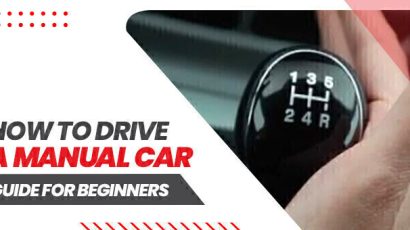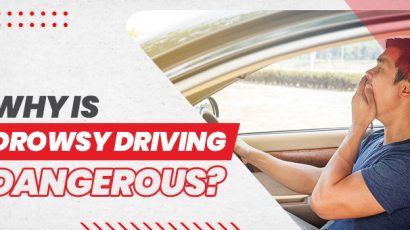
Everyone is aware of the existence of roundabouts on roads. But not everyone is quite sure of the purpose they serve. These are specifically designed to ensure that intersections are safe for vehicles.
If you have a car, it is important to know the traffic rules in your region and the general rules of driving. It is necessary to follow these rules whenever you are traveling anywhere. Failure to abide by the regulations increases the possibility of accidents occurring.
This post specifically discusses the rules related to roundabouts. Read on to learn how to use a roundabout and the roundabout rules. By following the rules of roundabouts, you can mitigate the chance of being involved in an accident. Statistics show that the probability of accidents on roundabouts is lower as compared to other intersections.
How to Use a Roundabout?
Firstly, it’s important to comprehend the purpose of roundabouts and their types. These ensure the safety of people. You can find two types of roundabouts, the single lane, and the double lane.
The single-lane ones are followed by a yellow sign with circular arrows and a speed limit sign. Single-lane roundabouts don’t have a divider in the middle, whereas some have a center island that separates both sides but has no traffic control device on it. There is only one driving lane in single-lane roundabouts, whereas, in a double lane, you have two separate lanes going opposite directions.
To become a safe and responsible driver, knowing how to drive a roundabout is essential. Do not stop in the middle of the road as this can cause accidents with traffic coming from behind you!
When driving on a roundabout, maintain your speed but do not tailgate other vehicles ahead of you. When exiting a roundabout going in a similar direction as others, drive straight through until you’re out of the road.
Don’t stop without a good reason! Also, avoid accelerating hard because it can cause accidents with traffic coming from behind you.
Finally, do not turn right or left onto the roundabout unless there is an arrow indicating otherwise. If there isn’t any sign, wait until all traffic clears before entering as usual.
Rules of Roundabouts
The total number of collisions at roundabouts during the initial three years of their use in the United States was 47% less than traffic circles of similar size. Also, it’s 70% less than all other intersection types combined.
A car entering a roundabout is always given priority over circulating traffic. Hence, slow down as you approach a roundabout and stay alert. Because if you’re not paying attention, you could end up with a front-end collision that will cost hundreds or even thousands of dollars to fix.
Here are some roundabout rules that you must follow:
1. Slowdown and Look
Always remember to reduce your speed. Slow down and look towards your left before you move forward. The existing traffic on the roundabout must be on the ride side, so take the left one.
Additionally, look for the pedestrians approaching or in the crosswalk. Finally, be sure that your vehicle isn’t blocking any of the entry points into the roundabout or obstructing pedestrians or bicyclists who are trying to cross into it as well.
2. Steady Speed
Maintaining a steady speed is the most important point of how to use a roundabout. Continue driving at a constant rate as you reach the exit.
You can’t go too fast, or you’ll risk losing control of the vehicle, but you also can’t go too slow because that may cause back-ups which could lead to an accident.
The general rule is to pick a lane and stay within it until you need to exit. For example, the outermost road on your right is for traffic coming from the nearby street.
3. Stick to One Lane
Generally, in the case of roundabouts, traffic keeps moving forward. Still, it rotates around a central point instead of stopping completely at each one throughout its course (much like how water rotates around the center of a whirlpool).
If the roundabout has two lanes, then stay in either one – they both lead towards one road, so it makes little difference which one you choose as long as it allows you to maintain your speed and provide enough space between your car and those around you.
When entering the roundabout from another road, merge with traffic. Stick to one lane on the roundabout and avoid weaving in and out of different lanes as this may confuse drivers who have the right-of-way.
4. Always Look Left, then Right, Left Again
Before you enter the roundabout, don’t miss any stop signs or turn signals. Instead, look left, right, then left again before continuing. If you aren’t sure, yield the right of way until you figure it out.
The traffic rules specify the significance of keeping a safe space between your vehicle and the one in front of you. However, you’ll find less room on roundabouts as compared to that on regular intersections.
Different Types of Collisions at Roundabouts
No one is unfamiliar with road accidents. However, one mistake made by one driver on the road puts many at risk.
When learning how to use roundabouts, it’s better if you also understand the common types of collisions that occur at roundabouts:
1. Rear-end Collisions
The rear-end type involves when the drivers are unable to control their speed on the roundabouts. We often see that people are tailgating each other. When one abrupt stop due to confusion or overestimated rate, cars collide, and accidents happen.
2. Head-on Collision
Collisions between vehicles moving around the circle are known as head-on collisions. It may happen when two cars drive straight through a crossing at the same time.
3. Angular Collisions
The angular collisions occur when one car can’t turn and collides with another vehicle as it approaches the roundabout.
For safety reasons, the drivers must know how to use a roundabout the right way. When entering and leaving the roundabout, ensure that you make it safe for yourself and others. Abiding by the rules of roundabouts ensures that you can make it through safely without any collision.
Final Thoughts
We have always seen people getting confused about how to drive a roundabout. However, there are some straightforward roundabout rules that you must know and follow when driving. We’ve covered the rules of the roundabout to help you understand how to use a roundabout safely.
The first thing you need to do is establish how many lanes are available to go in the direction you are traveling.
You can use the “look before you enter” rule – scan the intersection, yield the right-of-way to pedestrians and other vehicles already in the roundabout, then proceed when it is safe. Then, follow the rules mentioned above of the roundabout.










